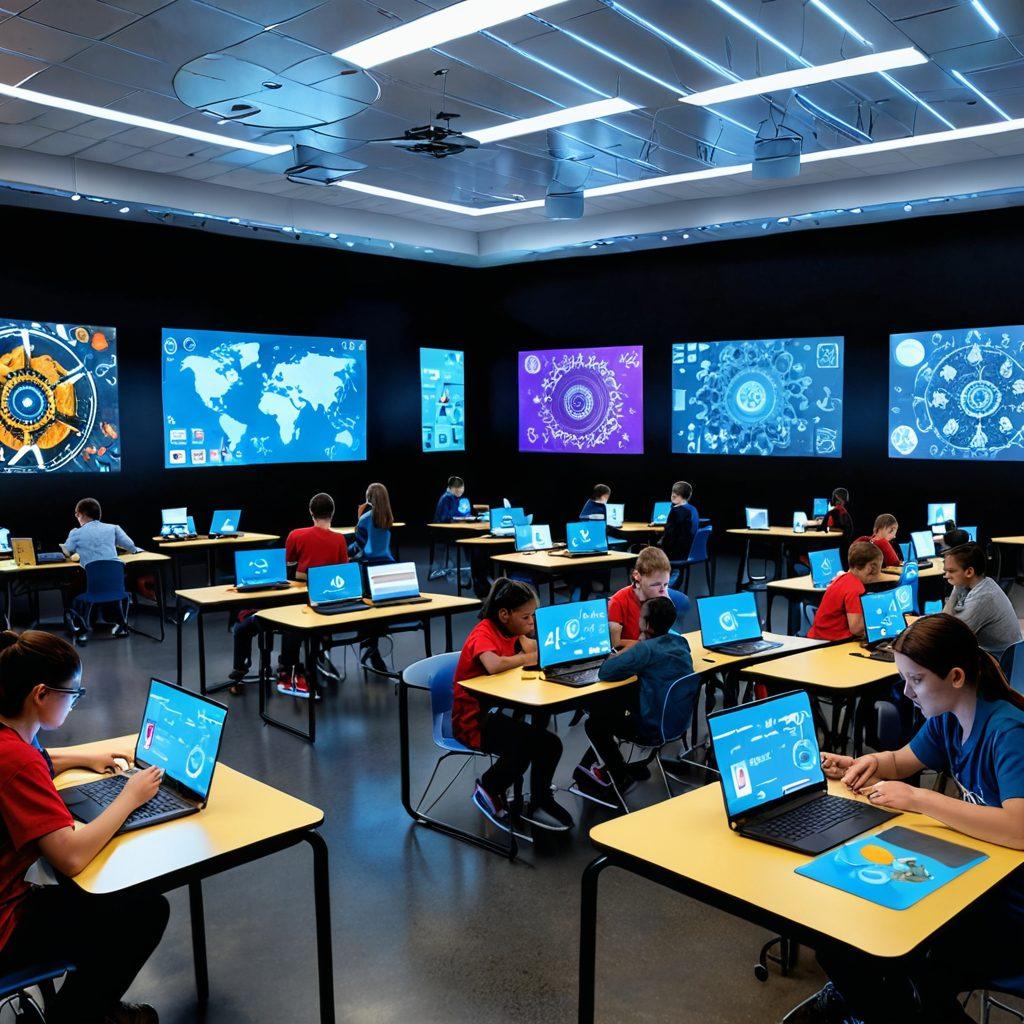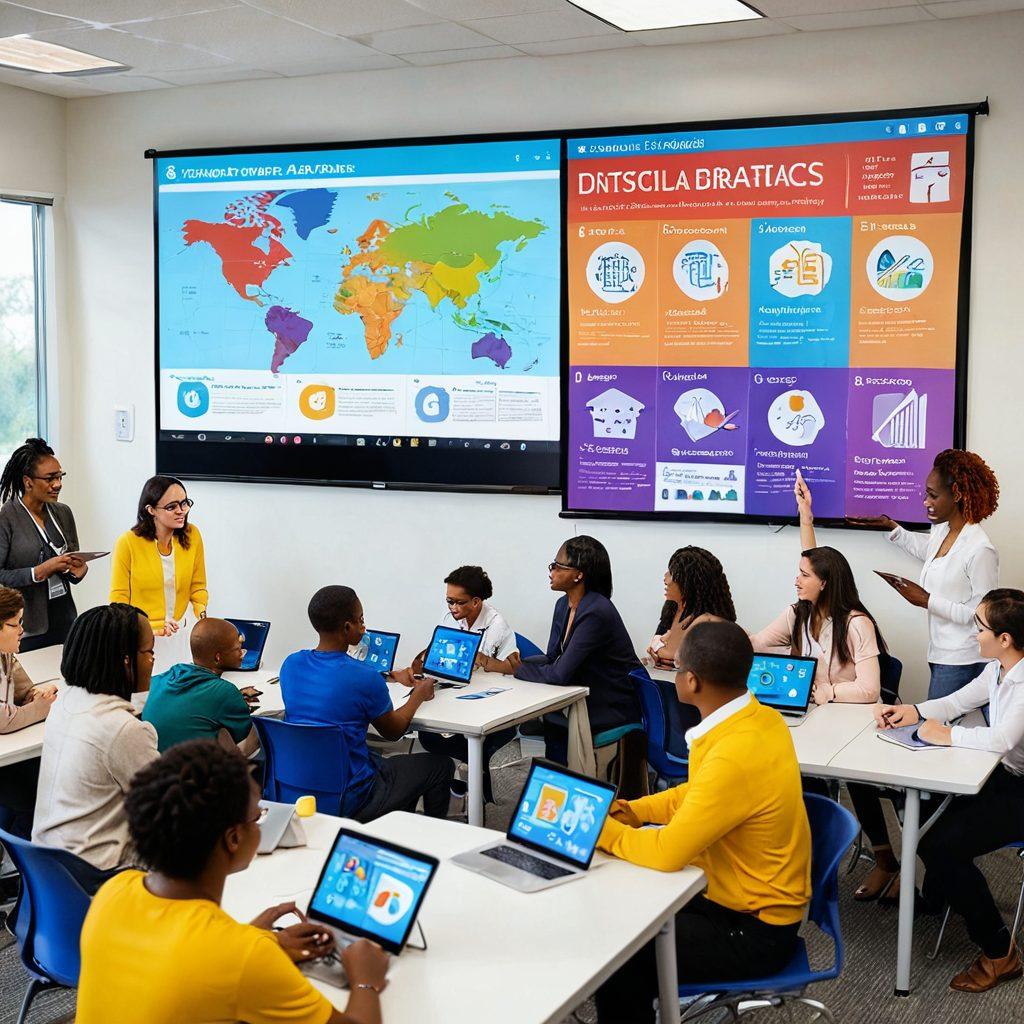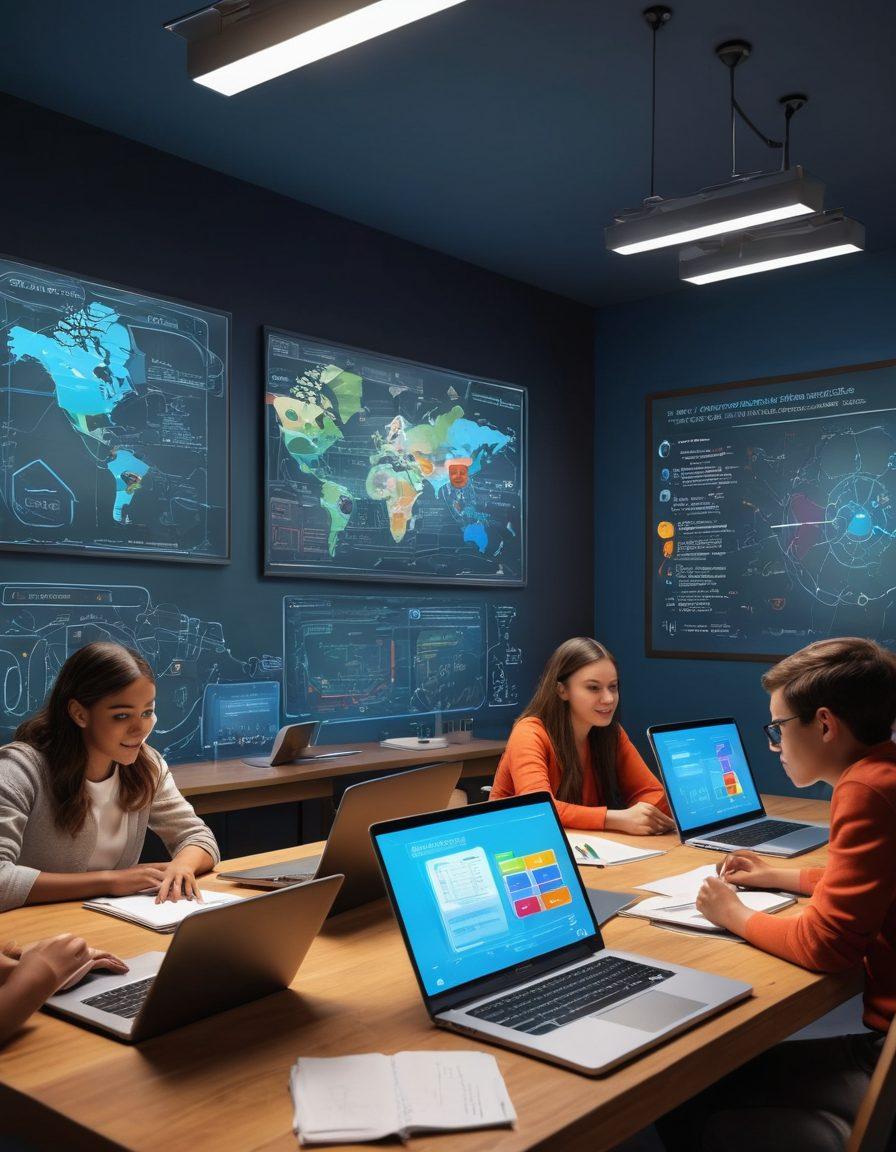Transforming Education: Unlocking the Future of E-Learning and Student Engagement
In this fast-paced, technology-driven world, the way we educate our students is evolving at an unprecedented rate. The traditional classroom is getting a digital makeover as e-learning platforms take center stage, revolutionizing the landscape of education. These online learning environments not only offer flexibility but also ignite student engagement like never before. Imagine a virtual classroom where academic resources are just a click away, and where students are motivated to engage with interactive learning experiences. How can we harness this power of digital education to transform the future of learning?
As engaging as a captivating story, e-learning platforms make education accessible to all. In a world filled with distractions, online courses provide the structure and variety that students crave. Whether it’s immersing oneself in electronic study materials or collaborating in knowledge sharing forums, the opportunities for academic growth are limitless. As educators, it's our responsibility to adapt to these changes and create enriching curriculum development that resonates with the digital generation. Isn't it incredible how technology can bridge the gap between teachers and students?
Consider this: what if every student had access to a wealth of teacher resources tailored to their individual learning styles? E-learning platforms are designed to do just that, offering personalized pathways to success through course management tools that track progress and provide feedback. This innovative approach not only fosters engagement but also enhances the overall learning experience. Students can engage with peers from around the globe, allowing for diverse perspectives and collaborative learning opportunities. What boundaries could we break with this connectedness?
Furthermore, the transition to digital learning can seem overwhelming for educators. However, embracing education technology does not mean sacrificing quality. In fact, integrating e-learning into traditional settings can amplify the effectiveness of teaching strategies. The power lies in combining the best of both worlds. As teachers explore various online tools, they can create blended learning environments that engage students through gamified education, asynchronous sessions, and live discussions. It’s all about leveraging technology for deeper connections and stimulating discussions.
Ultimately, the future of e-learning and student engagement relies on our ability to innovate. As we continue to navigate through the advancements in educational technology, we must remember that at the heart of these platforms lies a simple truth: learning should be engaging, relevant, and empowering. By harnessing the potential of e-learning platforms, we can nurture a generation of lifelong learners who are not just consumers of information but active participants in their educational journey. So, how will you contribute to this educational revolution?
Empowering Educators: Essential Resources for Digital Education and Curriculum Development
In an age defined by rapid technological advances, the face of education is continuously evolving. The rise of digital education has opened doors to innovative opportunities that were once considered impossible. Imagine a world where geographical barriers no longer inhibit learning and where an engaged student body thrives within a virtual classroom. This is not just a dream; it’s our new reality! The potential of e-learning lies in its ability to transform traditional academic resources into engaging, interactive experiences that capture the hearts and minds of learners. How can educators embrace these changes to empower themselves and their students?
To fully harness the benefits of digital education, educators need essential resources that breathe life into curriculum development. They are no longer limited to textbooks or static study materials. Today’s teachers are turning to a myriad of online courses and interactive learning tools that invigorate their lesson plans. For instance, platforms like Khan Academy and Coursera offer a treasure trove of content, allowing educators to curate personalized learning experiences for their students. This shift not only enhances the way knowledge is shared but also promotes greater student engagement. What resources are you currently using to inspire your classroom?
The journey of integrating education technology doesn't stop at discovering resources. It involves a strategic approach to course management that prioritizes student collaboration and knowledge sharing. As an educator, one might ask, 'How do I foster an environment where students feel valued and motivated?' The answer lies in utilizing collaborative tools that promote discussion and interaction. Programs like Google Classroom and Microsoft Teams facilitate seamless communication, allowing students to share insights and work on projects together—a vital ingredient for effective learning!
Incorporating various teacher resources like multimedia presentations, interactive quizzes, and even gamified learning experiences can elevate the educational journey for students. These tools not only cater to different learning styles but also encourage active participation. Afterall, aren’t we all drawn to experiences that make us feel involved? Striking a balance between theory and practice is crucial, and with the right resources at hand, teachers can create an environment that thrives on curiosity and exploration. What interactive tools have you experimented with in your own teaching?
Finally, as we continue to navigate through the digital landscape of education, it's important for educators to stay informed about the latest trends and advancements. Subscribing to podcasts, joining online forums, or attending webinars can open up pathways to new ideas and support networks. Remember, empowering yourself with knowledge is the first step toward transforming your teaching methods and your students’ learning experiences. In this ever-changing digital world, how will you adapt your teaching strategies to ensure every student feels engaged and inspired?
Interactive Learning in the Virtual Classroom: Strategies for Effective Knowledge Sharing
In the rapidly evolving landscape of education, the rise of e-learning has transformed traditional methods of teaching and learning. Imagine a bustling virtual classroom where students engage with their peers and instructors as if they were side by side, sharing ideas and collaborating on projects—all from the comfort of their homes. With the right strategies, interactive learning can thrive in the virtual classroom, leading to more robust knowledge sharing and enhanced student engagement. As we continue to embrace this digital education era, how can we ensure that our online courses provide meaningful and engaging experiences for all learners?
One of the most exciting aspects of an educational learning platform is its ability to leverage technology to foster interaction. Incorporating video conferencing tools and interactive software into course management can transform a standard classroom lecture into an engaging, dynamic experience. For example, when audio-visual presentations are combined with live polls or Q&A sessions, students are motivated to participate actively, making the educational experience feel less like a passive viewing party and more like an engaging discussion. Could the excitement of real-time collaboration lead us towards a new era of academic resources?
However, merely providing digital resources is not enough; creating a captivating curriculum development plan is essential for the success of e-learning initiatives. Teachers must embrace innovative elements such as gamification, where learning tasks are designed to provide a fun and competitive atmosphere. By challenging students with quizzes, leaderboards, and rewards, we ignite their desire for knowledge and draw them into an active learning process. Similar to how Olympic athletes train for the podium, our students must also feel invested in their educational journey. What if every online course turned into an adventure that captivated their imagination?
The heart of interactive learning lies in understanding students' diverse needs. Tailoring study materials to accommodate different learning styles—whether visual, auditory, or kinesthetic—can significantly boost engagement levels. Educators should provide varied resources, such as podcasts, videos, and hands-on projects, allowing students to select what resonates with them. This personalized approach fosters a sense of ownership and responsibility over their education. Have you ever stumbled upon a resource that changed the way you viewed a subject completely? Such moments define our academic journeys, and we should aim to replicate them for every learner.
In conclusion, the virtual classroom opens up a world of possibilities for effective knowledge sharing through interactive learning. By harnessing education technology, engaging curriculum development practices, and diverse academic resources, educators can create an enriching environment that facilitates student engagement. The future of e-learning lies in our hands—let’s embrace these strategies to transform our online courses into immersive experiences that resonate deeply with our learners. As we venture into this digital frontier together, remember: every student’s journey is unique, and it’s up to us to make it unforgettable. How will you be part of this transformative shift in education?


